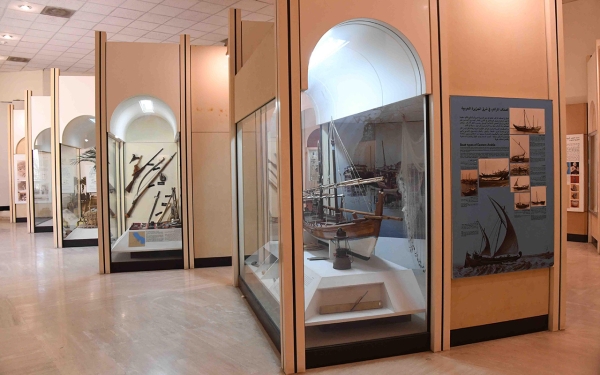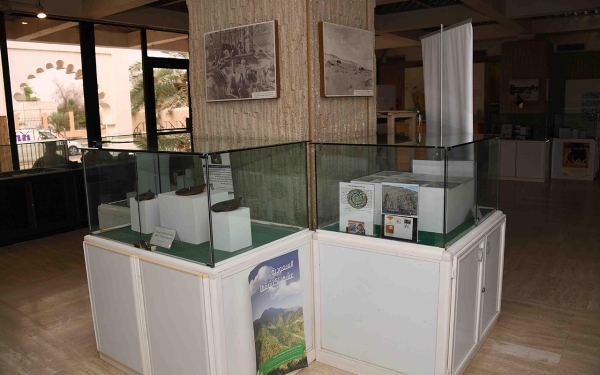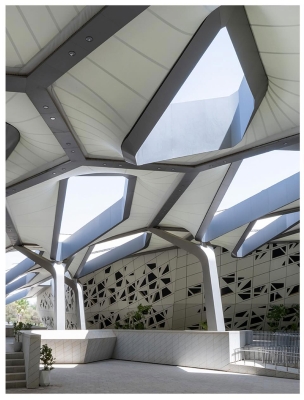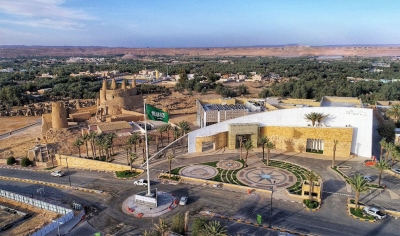


Al-Ahsa Archaeological and Heritage Museum is one of the museums in al-Ahsa Governorate in the Eastern Province, east of the Kingdom of Saudi Arabia. It is located in the city of al-Hufuf, near the historic Ibrahim Palace, House of Allegiance, and al-Amiriya School.
History of al-Ahsa Archaeological and Heritage Museum
Al-Ahsa Archaeological and Heritage Museum embodies the memory of the province, dating back to the BC eras. It was established in 1983 and officially opened in 1997. The museum houses approximately 1,400 artifacts and heritage pieces, alongside photographs, manuscripts, historical documents, coins, and parts of the life and history of the province throughout the ages. The museum was established on an area of approximately four thousand m², with an additional 1,300 m² at the back for organizing heritage activities.
Halls of al-Ahsa Archaeological and Heritage Museum
Al-Ahsa Archaeological and Heritage Museum includes artifacts dating back to the Stone Age, showcasing its history, recorded artifacts, and tools from over five thousand years BC. The hall dedicated to this era includes the geological history of the region dating back millions of years, in addition to tools, artifacts, and sites from the Paleolithic, Mesolithic, and Neolithic periods. Notable sites include Ain Qanas in al-Ahsa and al-Dosariyah, where primitive shelters and huts were discovered.
The museum's courtyards feature various exhibits of wildlife in the Eastern Province, highlighting desert plant life, annual and perennial trees famous in al-Ahsa, and the province's wildlife, including its surface features and terrestrial animals. Additionally, the exhibits showcase marine life, fish species, and fisheries in the Arabian Gulf.
The museum's sections vary according to its collections, including a section for artifacts and their restoration, a section for mapping and drawing, and a photography studio of the Bronze Age. This studio features sites from the third millennium and early second millennium BC, and cities from the Bronze Age in eastern Arabia. This period is known as the Dilmun civilization, with its legends and the emergence of camel herders around 1700 BC -500 BC (The Assyrian and Late Babylonian periods).
The museum's sections also include a section for artifacts from al-Uqayr sites and the Hellenistic period, contemporary with the Gerrha period, dating back to 400 BC- - 320. This section also features maps showing land and sea trade routes in and around the Arabian Peninsula, highlights the scripts and languages of eastern Arabia before Islam, and showcases samples, including a stone tablet inscribed with the Hasaitic Musnad script. Additionally, there is an overview of writing in Islamic heritage, its development, and tools. The section also covers the Sasanian period in eastern Arabia, 228–622, and the unification of Arab tribes.
Sections of al-Ahsa Archaeological and Heritage Museum
Al-Ahsa Archaeological and Heritage Museum includes a hall comprised of three sections. The first section features a map of archaeological sites in the Eastern Province, a board introducing al-Ahsa Archaeological and Heritage Museum, and another displaying the history of modern development in the Kingdom. This section also includes photographs of the Founding King Abdulaziz Bin Abdulrahman Al Saud, inaugurating several projects in the Eastern Province, and various old photos of al-Ahsa. Part of the reception hall is dedicated to private museum exhibitions, and there is a lecture and presentation hall. The museum also features glass display cabinets, colorful explanatory boards, and detailed maps arranged according to the chronological and historical sequence of the province.
The museum includes a section focusing on the Islamic period and the caliphate in eastern Arabia, displaying artifacts from this era. It also highlights the role of the Bani Abdul Qais tribe in embracing Islam, their establishment of some of the oldest mosques, and the early Islamic cities of Hajar, al-Ahsa, and al-Uqayr. Another section is dedicated to the period of local rulers of al-Ahsa (the Uyunids, the Usfurids, and the Jabrids), in addition to a section showcasing al-Ahsa during the Islamic era, throughout the first and second Saudi states, and under the rule of the Founding King Abdulaziz Bin Abdulrahman Al Saud.
Related quizzes
Related articles

